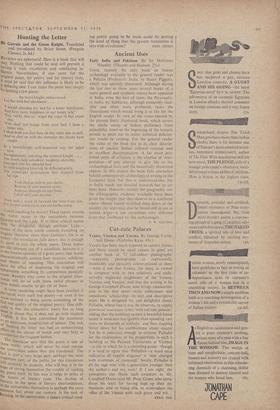Cut-rate Palaces
VENICE has been much exposed to camera lenses, and there would be small reason to greet yet another book of '72 full-colour photographs'. --especially photographs as Capriciously, mawkishly and inexactly colour-printed as these --were it not that Venice, for once, is viewed in company with its two relatively and unde- servedly neglected neighbours of the Veneto, Vicenza and Verona, and that the writing is by George Campbell Dixon, who brings amateurish- ness in the best sense--style, enthusiasm and unpedantic scholarship--to text and descriptive notes. He is delighted by, and delightful about, Palladio, whose fate it was, he observes, to supply provincial nouveaux riches 'with cut-rate palaces,' adding that the ambition to own a beautiful house seems 'a weakness less ignoble than spending vast sums on diamonds or trollops,' and then slapping Street doym for his snobbishness about stucco. Yet he is judicious enough to criticise Palladio for the recklessness of his proportions in such a building as the Palazzo Valmarana at Vicenza —a city to which he is a charming guide—though it is hard to agree that 'Palladian—a word once indicative of superb elegance' is 'now charged with overtones of contempt.' Surely, Palladio is all the rage now with a generation younger than the author's and my own? If I am right, the youngsters can thank such amateurs as Mr. Campbell Dixon (and Mr. Peter Green, who intro- duces his text), for having kept up their en- thusiasm, and so being able to reintroduce the villas of the Veneto with such grace and wit.
CYRIL RAY


































 Previous page
Previous page